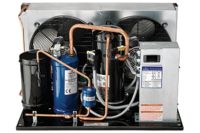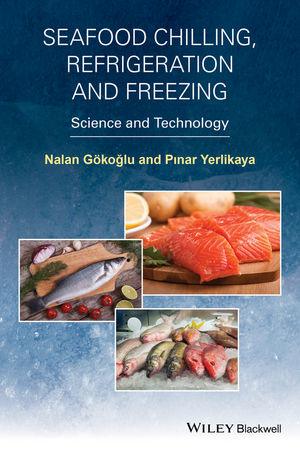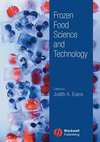The refrigeration system is arguably one of the key components of a food storage facility. It needs to be reliable, 24/7. But, it can also save energy and add to the profits when properly designed, operated and maintained. How? First, let’s start with a question for operators to consider.
When the ambient temperature is 55° F, does your refrigeration system still operate like it’s 80°F? If so, if the speed limit is 35 miles an hour, do you accelerate to 60 and control your speed with the brake pedal?
If you answered “yes” to the second question, you’re wasting fuel, putting an unnecessary strain on your vehicle’s engine and braking system and are likely driving in a hazardous manner.
If you answered “yes” to the first, while you may not be operating your facility in a hazardous manner, you’re likely wasting energy, reducing your refrigeration system’s equipment life, likely increasing maintenance, and overall, digging into your profits.
It doesn’t have to be that way.
If it’s fixed, break it
Today’s refrigeration systems offer a broad range of mechanical and electronic technologies that can improve performance and efficiency. But, one area for improvement is often sadly overlooked.
Fixed head pressure operation using thermal expansion (TX) valves, which has been the “bible” of system operators for years, is the “pedal to the metal” method of operation. When it was introduced years ago, it promised energy savings by allowing the system pressure to float lower along with a decrease in temperature. But, the design wasn’t up to the task; capacity fluctuated and flash gas bubbles formed from the liquid refrigerant, choking the TX valves, lowering volume, and in some cases, causing system failure. Mechanical solutions were attempted, but eventually the industry gave up and basically determined it was easier to keep the head pressure at a fixed point.
In North America, that “point” is a fixed head pressure that approaches 105°F. It maintains pressure through mechanical head pressure control valves or fan cycling. And, while that works just fine, it’s also an inefficient, expensive way of maintaining a refrigeration system. Operation by floating head pressure based upon temperature changes remained a theoretical option. Now, through the application of modern electronic controls and electronic expansion (EX) valves, the system savings—energy, equipment and maintenance—that had once been thought attainable through TX valves now truly is attainable. The advantages of low condensing refrigeration are truly at hand.
Simply put—it’s time to break what’s been “fixed” for so long.
How low can you go?
Floating head pressure, or low condensing refrigeration, provides flexibility, efficiency and savings by maintaining the system’s head pressure at 10-20°F above the ambient temperature.
The system is controlled via pressure regulators or by changing the speed of the condenser fan motors and uses EX valves at the evaporator to effectivelyoperate over a wide range of condensing temperatures. These valves digest any flash gas that may be produced as the head pressure adjusts or floats with falling ambient temperatures, thus eliminating the problems that TX valves had when trying to accomplish the same in years past.
Here’s how it works. As the ambient temperature starts to drop (think operation in the evening/overnight/early morning hours in climates as diverse as those of Phoenix to Montreal), head pressure floats down with it. Compressor capacity ramps up as the EX valves operating over the range modulates and digests flash gas (if created). The system is no longer operating at maximum capacity; it’s operating in an efficient manner that saves energy (think: “lower electric bills”) and equipment life. Compressor wattage decreases and BTUH capacity increases. A minimum saturated condensing temperature (SCT) must be designated. The system typically will not operate efficiently below this point.
For approximately 75% of a working day, operators can realize lower costs through energy efficiency ratio (EER) improvements of 15-20% for every 10°F decrease in head pressure, depending on the compressor type and model.
Expansion valve kits can be retrofitted into existing systems or used in new build operations to achieve maximum energy efficiency, precise temperature and humidity control, reduced maintenance and downtime, improved product quality and enhanced profitability.
When it’s cool, that’s hot stuff
When the temperatures drop—in the cooler months of the year or the cooler hours of the day—the benefits begin to mount. Savings opportunities are significant, and are more prevalent than one might think.
For example, temperatures in the far northern latitudes of the United States and into Canada are below 60°F 90% of the time. An east-to-west band that includes the cities of St. Louis, Denver and San Francisco enjoys temperatures below 60°F for 60% of the time. Even southern Florida temperatures are below 60°F 20% of the time. Companies that reside in regions that provide energy incentives can easily take advantage of these.
And,energy savings initiatives are under way that would favor the use of low condensing systems in either retrofit or new build operation. The State of California is leading the way with its Title 24 for the supermarket refrigeration market. This will establish a code that requires 70°F minimum condensing temperatures.
So, what’s the catch?
The only limiting factors to low condensing operation are general industry understanding of the practice, the questions of reliability and availability.
Until recently, the contracting mantra was that high head pressures are required for reliable refrigerator system operation. But, that’s changing. Contractors and service personnel that wish to provide the best options for their customers are learning about low condensing operation and successfully installing systems. The fear of reliability goes away as TX valves become a thing of the past and are replaced with now-available EX valves.
Of course there is an upfront cost to this, but the savings over time in terms of both energy and maintenance costs, system reliability enhancements and product quality improvements can provide ample evidence for a reason to believe in the approach. New installations are typically less expensive and more reliable than that of a TX valve-based system.
As potential users learn of the success of others in their particular market, and realize that they’re not pioneering a new approach, concerns quickly lessen.
Real world applications in the food storage industry
A fruit storage warehouse was experiencing poor temperature control at light loads, and connectivity among the eight storage rooms was an issue. A retrofit system using EX valves implemented variable speedcondensing fan control and dropped the operating head temperatures from 110°F to 70°F (minimum SCT) and added system supervisory control.
The retrofit allowed the system capacity to increase from five to all eight storage rooms utilizing the same compressor horsepower. Precise temperature control was achieved under light loads via remote adjustment and monitoring. Energy costs were lowered and the operator was able to take advantage of power incentives from its local electric utility.
A mini carrot manufacturer’s product quality became an issue due to coil frosting. A slow temperature pull-down took too long for the refrigeration system to reach its set point. Overall production suffered, and utility bills increased.
The addition of a single EX valve piped to two evaporators on three systems and the adjustment of fan cycling from 110°F to 70°F resulted in faster pull-down, higher suction pressure and reduced defrost time. Energy cost for the system dropped 35%, while production went up 30% and product quality improved.
The compressor at a lobster storage facility failed annually because of liquid refrigerant floodback through an incorrectly mixed brine solution. As a result, business at the height of lobster season suffered.
The system was retrofitted with a single EX valve replacing three TX valves, and no failures occurred following the upgrade. The owner then upgraded his entire facility, adding 11 EX valves and controllers. All of the equipment can be monitored by a tablet using Wi-Fi, profitability is up and supply remains steady throughout the lobster season.
Is low condensing refrigeration right for me?
Low condensing refrigeration is a proven method of delivering energy savings and a wide range of benefits beyond. It’s no longer a “new” technology.
The best time to think about retrofitting a system is when your existing system is up and running, providing the normal service you experience day to day. Ask your contractor about the benefits you may expect through a system upgrade. Make certain that your contractor has the backup and assistance from an experienced EX valve manufacturer that can help with optimal system design and provide troubleshooting expertise before system installation. Both the contractor and manufacturer may be able to provide references with experienced customers who may be able to assist by answering operational questions.










